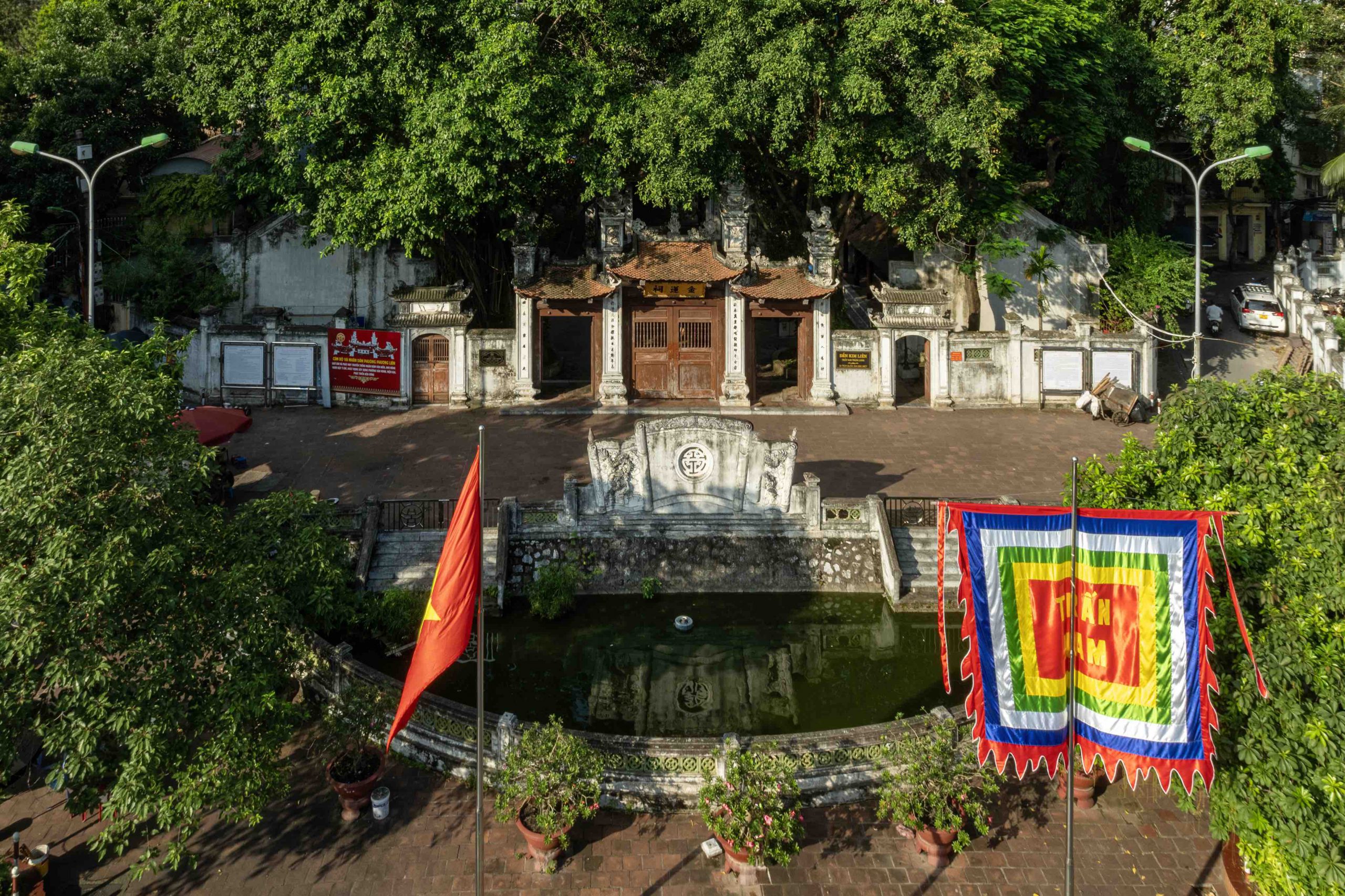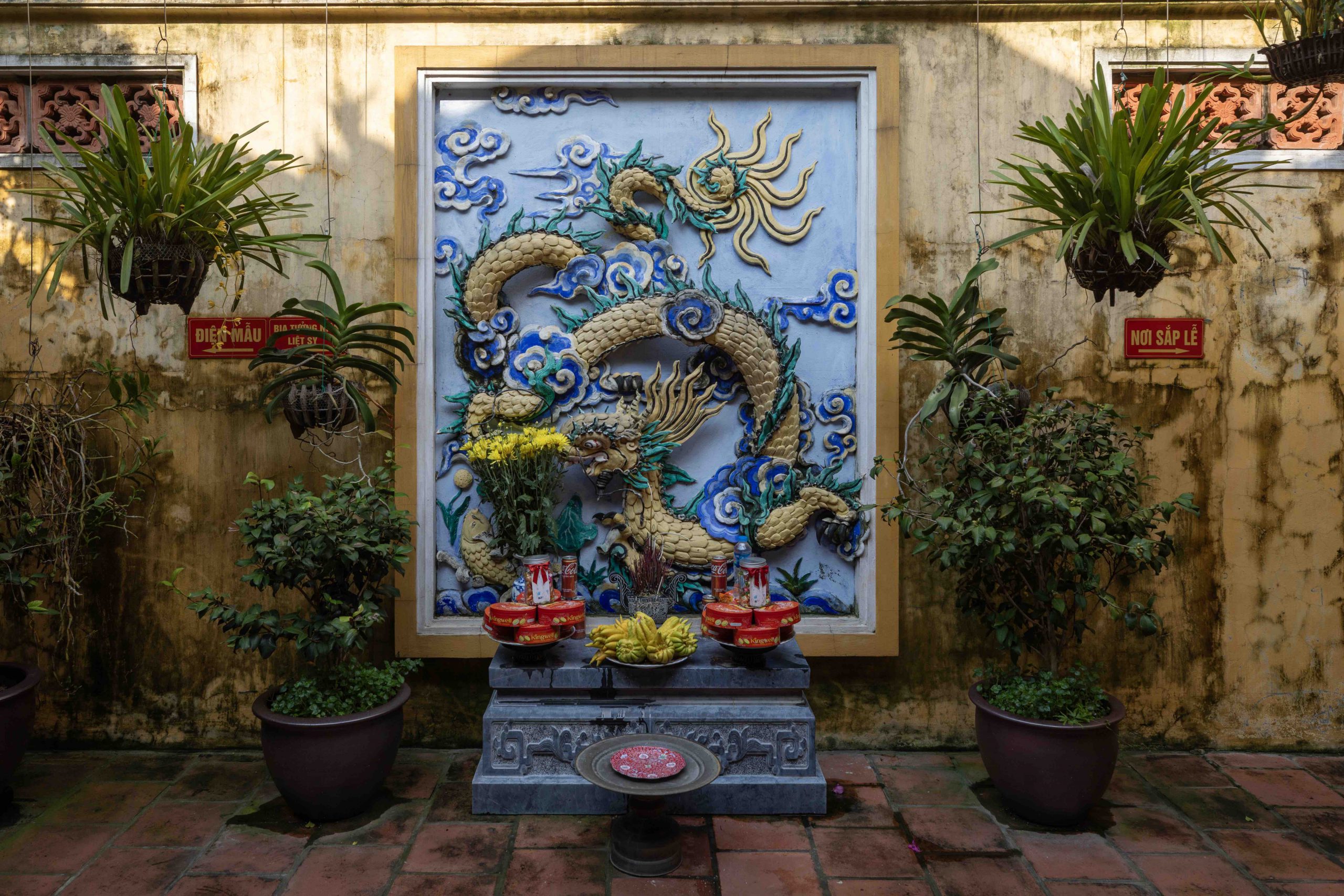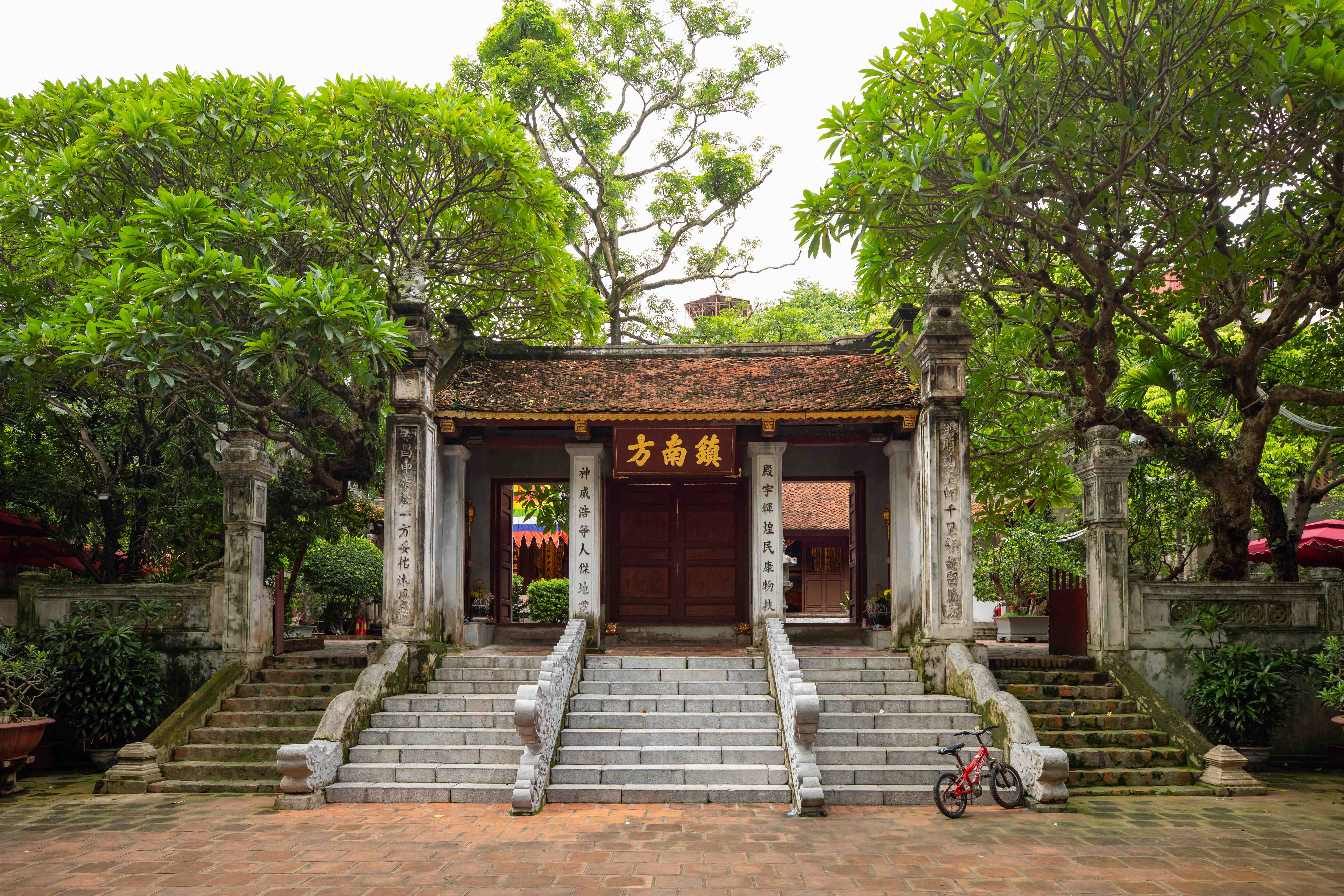Story: Historian Le Van Lan
Photos: Le Viet Khanh
For thousands of years, a rich tapestry of spiritual sites has enveloped the ancient capital of Thang Long, now modern-day Hanoi. This mystical world includes temples dedicated to Buddha, communal houses honoring local deities, shrines for ancestor worship and nature spirits, altars for Taoist saints, and the sacred sites of Mother Goddess worship. Among these, four revered religious and spiritual architectural sites stand out, known collectively as the Four Sacred Guardians of Thang Long.

To the east of the former imperial city stands Bach Ma Temple, dedicated to the sacred spirit of Long Do Mountain (the Dragon’s Navel). This mountain is considered the highest and most spiritual point of the land where, in 1010, Emperor Ly Thai To chose to establish the capital city of Thang Long (Rising Dragon). In the 7th century, northern forces occupied this region and established their administrative center, known as Dai La.
Earlier still, in the early centuries of the Common Era, the village elder To Lich led people to settle on Long Do Mountain and establish the original village of Hanoi, which would eventually grow to become the Thang Long – Hanoi region. After his death, To Lich was believed to have merged with the spirit of Long Do. This resulted in a fierce spiritual battle in 866 between Long Do-To Lich and Cao Bien, a cunning northern official. The battle ended in the foreign occupiers’ decisive defeat, marked by Cao Bien’s unexpected act of building a temple to honor the victorious Long Do-To Lich.
From the temple established in 866, the spirit of Long Do-To Lich continued to manifest, appearing on several occasions. Most notably, in 1010, it appeared in the form of a white horse—symbolizing the sun—and assisted Ly Thai To in the construction of Thang Long. In gratitude, Ly Thai To, the founder of Thang Long, granted this deity the title of “National Capital Guardian Deity,” signifying the deity was the guardian of the entire urban area of Thang Long and not just a single village. From that time forward, the temple dedicated to Long Do-To Lich became known as Bach Ma Temple.

To the west of the former imperial city, in the village of Thu Le, stands Voi Phuc Temple, which has a statue of a prostrating elephant at its entrance. This statue represents the battle elephant of Saint Linh Lang, a figure of aquatic origin, said to be the son of the Dragon King who was reborn as the son of Hao Nuong, a concubine of King Ly Thanh Tong (1054–1072). Linh Lang is celebrated for riding an elephant into battle to help the king defeat the Song army, which invaded from the north. After his death, the king ordered the villagers to build a temple in his honor. This temple is also known as Thu Le Temple, named after Saint Linh Lang.
To the north of the former imperial city stands the majestic Chan Vu Shrine. Inside, a horizontal plaque bears the name Tran Vu. Both names refer to a Chinese Taoist sage who, having attained enlightenment, was entrusted by the heavens with safeguarding the northern region of the celestial realm.
According to legend, before becoming a deity, Chan Vu symbolically extracted the viscera from his body, representing the duality of good and evil within humanity. To ensure the purity and longevity of his divine transformation, he cast his entrails into the fields. From these discarded organs, monstrous creatures resembling snakes and turtles emerged. Consequently, statues of Chan Vu are always crafted from black bronze—a color associated with the northern direction in feng shui—and depicted in a dynamic pose, driving a sword into a writhing mass of snakes and turtles at his feet. An enormous black bronze statue, created by the artisans of Ngu Xa in 1677, still stands proudly in the main hall of Chan Vu Shrine.
Finally, heading south from the center of the imperial city, in the Kim Lien neighborhood, stands a temple named after the district, situated on a high mound that overlooks this low-lying area. Kim Lien Temple is dedicated to the deity Cao Sơn, who represents the spirit of the left peak of the Ba Vi – Tan Vien mountain range, known for its three high summits. This temple is considered one of the foremost shrines in Vietnam. The decision to bring the Ba Vi mountain deity to a lowland area in southern Thang Long aligns with a logical feng shui principle, consistent with the traditional Vietnamese dualistic worldview, which often features paired structures: high and low, dry and wet, land and water, mountain and river.

According to a stone inscription composed by historian Le Tung in 1510 and erected at Kim Lien Temple in 1722, a general from the Later Le dynasty received the aid of the deity of Cao Sơn during a campaign to the southern mountains of Ninh Binh in 1509, undertaken to enthrone King Lê Tuong Duc. As a result, the deity was brought to Kim Lien to be worshipped.
This historical account suggests that Kim Lien Temple may have been established in the early 16th century, whereas Bach Ma Temple dates back to the mid-9th century, Voi Phuc Temple to the mid-11th century, and Chan Vu Shrine to the early 12th century. This indicates that the Four Sacred Guardians of Thang Long were not formed simultaneously. Instead, these three temples and one shrine originally functioned as independent religious and spiritual structures within the Thang Long capital.
The idea to link these four religious and spiritual sites into the Four Sacred Guardians of Thang Long likely emerged in the late 15th century. This concept may have been inspired by a map of the capital Thang Long (then called Dong Kinh) included in the Atlas of Hong Duc, created in 1490.
Examining this 15th-century map, while Kim Lien Temple is not yet depicted in the southern part of the capital, Bach Ma Temple to the east, Voi Phuc Temple to the west, and Chan Vu Shrine to the north are all clearly marked. Notably, their locations and orientations are centrally positioned among the cardinal directions and are situated near the banks of the Nhi Ha River, which flows from the north to the east, and the To Lich River on the west side. This arrangement forms a protective boundary around the capital Thang Long.
In the 16th century, with the addition of Kim Lien Temple, the concept of four sacred points marking the protective boundaries of the capital in each cardinal direction became clearly established. By the 19th century, the Nguyen dynasty’s book Ha Thanh linh tich co luc (A Record of Sacred Sites in Hanoi) meticulously documented in Chinese characters: “Four Sacred Guardians of Thang Long—East Guardian: Great King Bach Ma Temple on Hang Buom Street; West Guardian: Great King Linh Lang Temple in Thu Le Village; South Guardian: Great King Cao Son Temple in Kim Lien District; North Guardian: Chan Vu Shrine in Tay Ho.” At this point, the concept of the Four Sacred Guardians of Thang Long was fixed in people’s consciousness.
Belief in the Four Sacred Guardians of Thang Long represents a unique and distinctive cultural and spiritual tradition of the capital Thang Long—now Hanoi—encompassing both beliefs and practices. To this day, each year, a solemn festival is held at each of the Four Sacred Guardians, reflecting people’s faith and respect for these deities, which protect this sacred land. These enduring traditions underscore the importance of these guardians in ensuring the continued existence and development of Vietnam’s capital.










